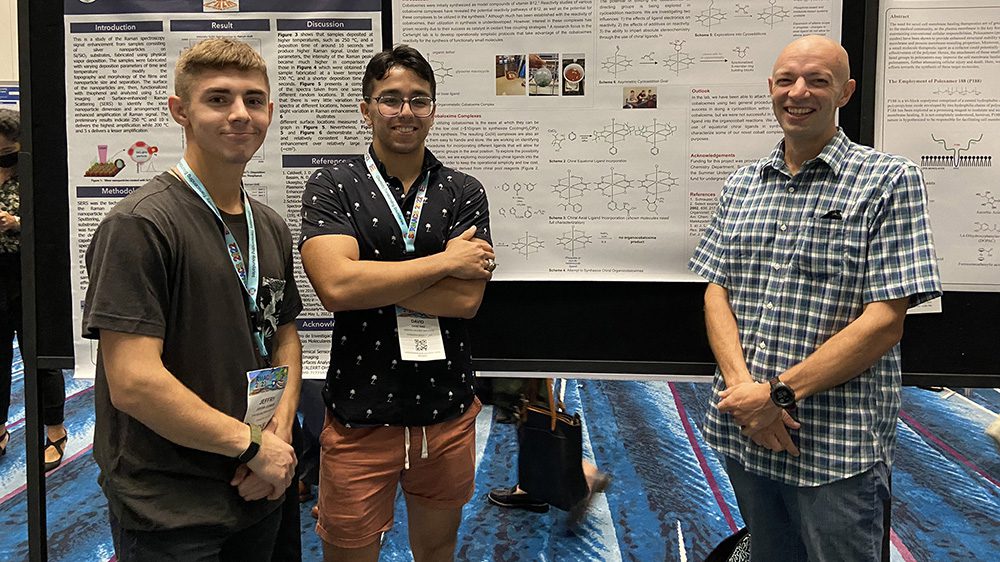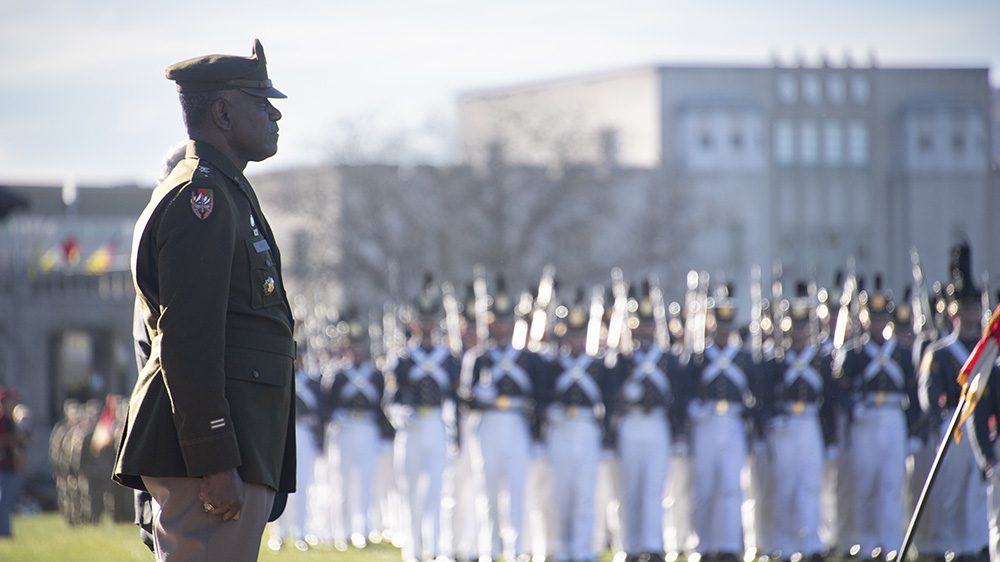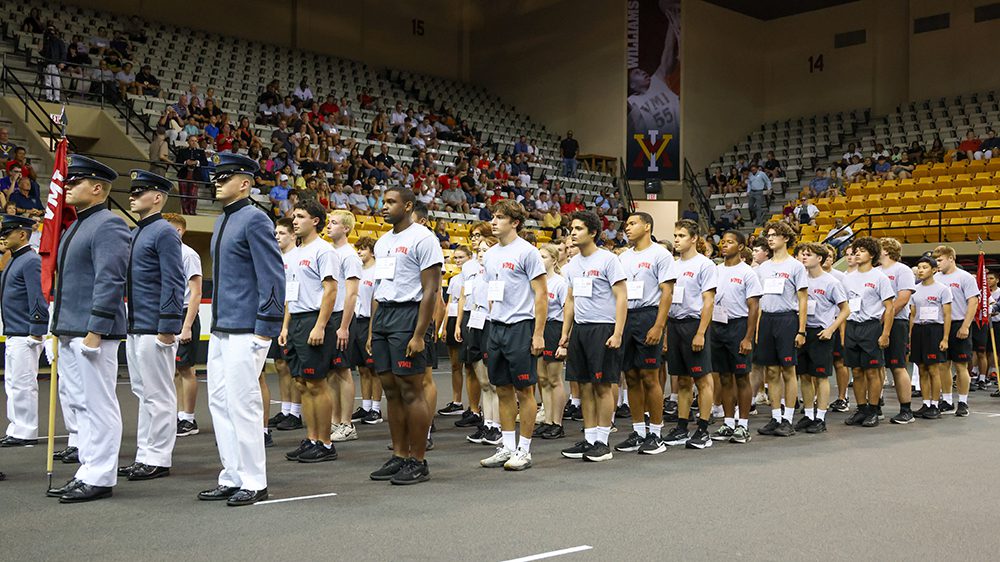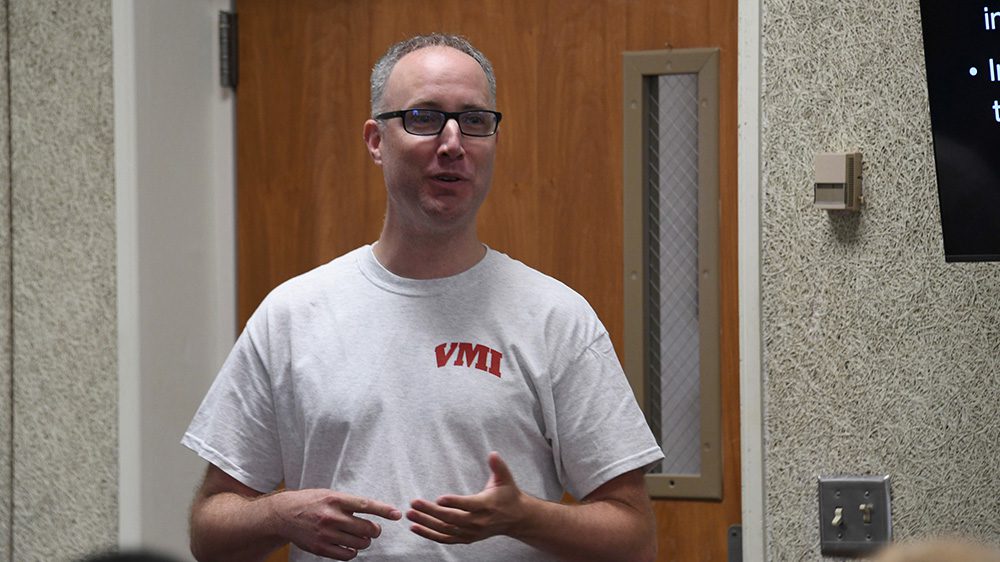A contingent of two cadets and one professor recently traveled to the American Chemical Society Southeastern Regional Meeting in San Juan, Puerto Rico. The ACS is the world’s largest scientific association, with a membership of more than 154,000 chemists, chemical engineers, and others in related professions, including all faculty members in the chemistry department at VMI. The region encompasses Virginia, Kentucky, and all points south of those states and east of the Mississippi River, including Puerto Rico. The theme of the meeting was “Chemistry Transcending Boundaries for a Sustainable Future.” More than 1,500 people attended the event.
Lt. Col. Daniel Harrison ’05, Ph.D., associate professor of chemistry, and Cadet Jeffry Jay Stober ’24, a chemistry major, presented results from research they have been conducting, exploring new ways to make carbon dioxide useful by turning it into fuel and other beneficial materials. They have designed and built new cobalt compounds that one day may contribute to room-temperature industrial process development requiring less energy than current technologies. Results from their research will be submitted to a peer-reviewed journal.
A large part of the conference involved students using original posters to describe and discuss research projects they have been conducting. Nearly 150 posters were on display, including that of Cadet David Diaz ’23, chemistry major. Diaz’ poster was titled, “Exploration of Cobaloximes in Synthesis,” and summarized the work he has been conducting with Maj. Kaitlyn Cartwright, Ph.D., assistant professor of chemistry, along with Cadets John Lagana ’23 and Owen Ahrens ’24. “I loved being able to experience all the wonders of Puerto Rico and expand my knowledge of chemistry at the same time. Being able to present my research in such a setting is a once in a lifetime opportunity,” said Diaz.
Harrison was pleased with the event. “It was everything you want out of a conference. Our cadets were able to share information with their peers, glean information from others, and build a network. At VMI, our lab has cutting-edge research equipment, some of which is not commonly found at primary undergraduate institutions. We can do everything we need to in our labs, but being able to share ideas at conferences enhances our research, and perhaps changes the direction it takes,” he stated.
While in Puerto Rico, the group took advantage of their spare time and took a kayak tour in a bioluminescent bay in Fajardo. The glowing water is caused by dinoflagellates (algae) that put off a faint blue light when disturbed. “That was one of the top five experiences of my life. We actually observe the chemical reaction responsible for the glowing of dinoflagellates in the lab, and it was amazing to see them in nature,” said Harrison.
Funding for the trip was made possible by support from VMI Center for Undergraduate Research and the Jackson-Hope faculty travel funds.




